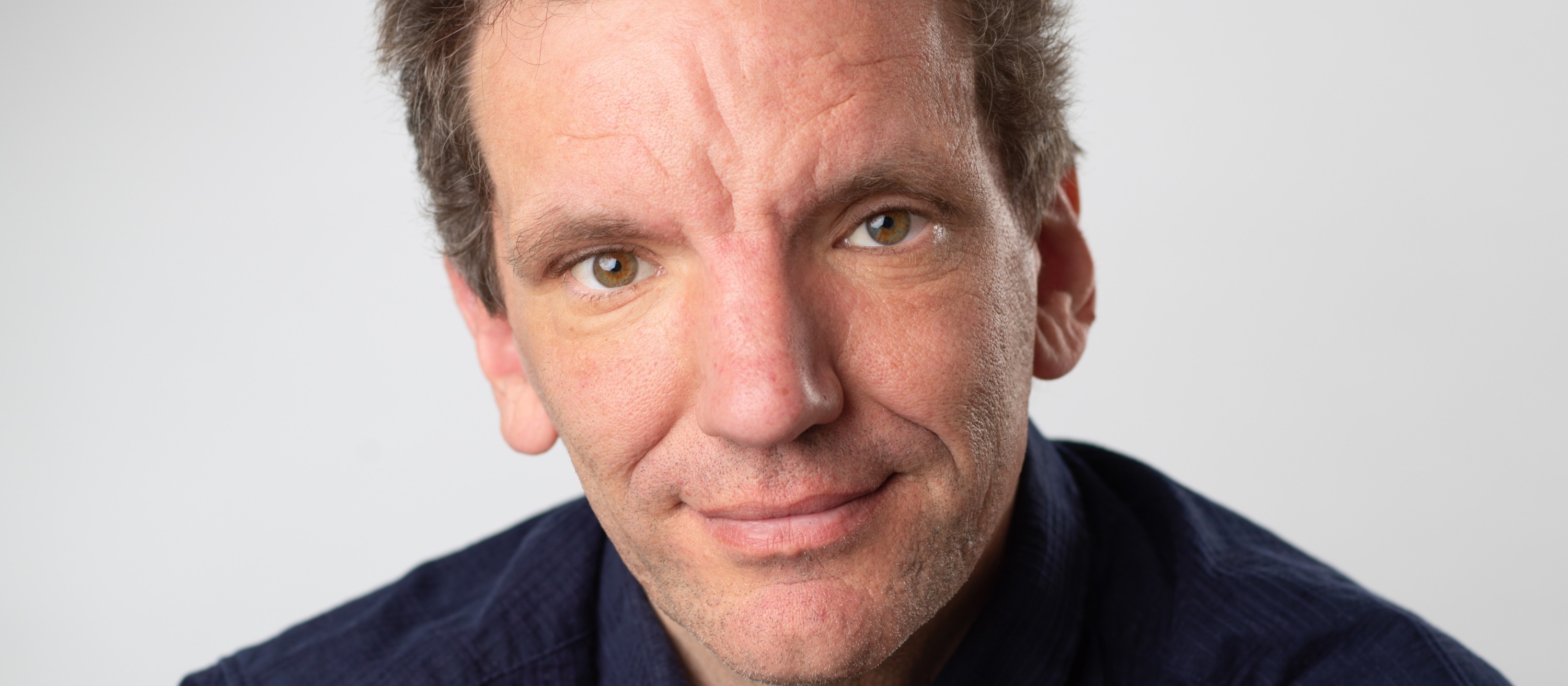Imagine walking down the street and noticing someone who looks just like you but isn’t related. That’s the kind of mystery Waardenburg Syndrome brings into the lives of those who live with it. This rare genetic disorder affects not only appearance but also hearing and other aspects of life. Henning Wehn, a well-known comedian from Germany, has Waardenburg Syndrome, and his story sheds light on how people with this condition navigate the world. If you’ve ever wondered what it’s like to live with Waardenburg Syndrome, buckle up because we’re diving deep into this fascinating topic.
Now, let’s talk about why this condition is such a big deal. Waardenburg Syndrome isn’t just about having different colored eyes or strikingly white hair; it’s a genetic puzzle that affects millions worldwide. Understanding it can help us empathize better with those who have it and raise awareness about its impact on daily life. So, whether you’re here for medical insight or just curious about Henning Wehn’s journey, you’re in the right place.
Before we dive deeper, let me tell you something cool: Waardenburg Syndrome is more than a medical condition; it’s a story of resilience and acceptance. People with this syndrome often face unique challenges, but they also possess incredible strength. By the end of this article, you’ll have a clearer picture of what Waardenburg Syndrome entails, how it affects lives, and how someone like Henning Wehn uses humor to tackle it. Let’s get started!
- Meet Chuck Schumers Wife The Woman Behind The Senator
- Lisa Welchel The Multitalented Mom From Americas Favorite Sitcom
Table of Contents
- What is Waardenburg Syndrome?
- Henning Wehn's Biography
- Types of Waardenburg Syndrome
- Symptoms and Characteristics
- Diagnosis and Testing
- Treatment Options
- Living with Waardenburg Syndrome
- Genetic Aspects of Waardenburg Syndrome
- Support Networks and Resources
- Conclusion: Embracing Diversity
What is Waardenburg Syndrome?
Waardenburg Syndrome is one of those rare genetic conditions that affects about 1 in every 40,000 people globally. It’s named after Petrus Waardenburg, a Dutch ophthalmologist who first described it back in the 1950s. This syndrome is all about genetic mutations that affect the development of pigment-producing cells called melanocytes. These cells are responsible for giving color to our skin, hair, and eyes. Without them working properly, things can get a little… colorful, shall we say?
Now, here’s the kicker: Waardenburg Syndrome isn’t just about aesthetics. It also impacts hearing, which makes it more than just a cosmetic issue. People with this condition might experience partial or complete hearing loss, and that’s where things get complicated. But don’t worry, we’ll dive deeper into the specifics later.
One of the most fascinating aspects of Waardenburg Syndrome is how it manifests differently in each person. Some folks might have heterochromia (different colored eyes), while others might have a strand of white hair running through their locks. It’s like nature’s way of saying, “Hey, you’re special!”
- Tips Drhomey Your Ultimate Guide To Smart Living Solutions
- Fred Gwynne Movies And Tv Shows The Iconic Journey Of A Legendary Actor
How Common is Waardenburg Syndrome?
While Waardenburg Syndrome isn’t exactly common, it’s also not unheard of. According to the National Organization for Rare Disorders (NORD), there are around 1 in 40,000 people worldwide who have this condition. That might sound like a small number, but when you consider the global population, it adds up to a lot of individuals living with this unique genetic makeup.
Henning Wehn's Biography
Henning Wehn is no ordinary comedian. Born in Germany, he’s made a name for himself with his sharp wit and ability to make even the toughest topics seem lighthearted. But there’s more to Henning than just his comedy. He also happens to have Waardenburg Syndrome, which gives him that distinctive look with heterochromia and a shock of white hair.
Henning’s journey into comedy wasn’t always smooth sailing. Growing up, he faced challenges due to his condition, but instead of letting it bring him down, he turned it into fuel for his jokes. His ability to laugh at himself and his situation is what makes him such a beloved figure in the comedy world.
Below is a quick overview of Henning Wehn’s life:
| Full Name | Henning Wehn |
|---|---|
| Date of Birth | March 20, 1973 |
| Place of Birth | Germany |
| Occupation | Comedian, Writer, Actor |
| Condition | Waardenburg Syndrome |
Henning’s Humorous Take on Waardenburg Syndrome
Henning doesn’t shy away from talking about his condition. In fact, he often uses it as material for his stand-up routines. He once joked about how people would stop him on the street, thinking he was someone else because of his striking appearance. That kind of self-deprecating humor is what sets him apart and makes his shows so relatable.
Types of Waardenburg Syndrome
Not all cases of Waardenburg Syndrome are created equal. There are actually four main types, each with its own set of characteristics. Let’s break them down:
- Type 1: This is the most common type and is characterized by dystopia canthorum, which is a widening of the inner corners of the eyes.
- Type 2: Similar to Type 1, but without the dystopia canthorum. It’s often associated with hearing loss.
- Type 3: Also known as Klein-Waardenburg Syndrome, this type includes upper limb abnormalities.
- Type 4: Also called Waardenburg-Shah Syndrome, this type is associated with Hirschsprung disease, which affects the digestive system.
Each type has its own set of challenges, but they all share the common thread of pigment abnormalities and potential hearing issues.
Which Type Does Henning Wehn Have?
Henning Wehn has Type 2 Waardenburg Syndrome, which explains his heterochromia and white hair but doesn’t include the dystopia canthorum seen in Type 1. This type is often linked with hearing loss, which Henning has managed to navigate with grace and humor.
Symptoms and Characteristics
Waardenburg Syndrome can manifest in a variety of ways. Some of the most common symptoms include:
- Heterochromia (different colored eyes)
- White forelock or premature graying of hair
- Abnormally shaped or wide-set eyes
- Hearing loss or deafness
- Lighter skin pigmentation
It’s important to note that not everyone with Waardenburg Syndrome will experience all of these symptoms. The severity and combination of symptoms can vary widely from person to person.
Impact on Daily Life
Living with Waardenburg Syndrome can present certain challenges. For example, hearing loss might make it harder to communicate in noisy environments. However, many people with this condition learn to adapt and thrive, often using their unique appearance to their advantage.
Diagnosis and Testing
Diagnosing Waardenburg Syndrome typically involves a combination of physical examination and genetic testing. Doctors look for the telltale signs like heterochromia, white forelocks, and hearing issues. If they suspect Waardenburg Syndrome, they might recommend genetic testing to confirm the diagnosis.
Genetic testing can identify mutations in specific genes like PAX3, MITF, SOX10, and EDNRB, which are known to cause Waardenburg Syndrome. This testing is crucial for understanding the type of Waardenburg Syndrome a person has and for planning appropriate treatment.
When to Seek Medical Advice
If you or someone you know has symptoms that suggest Waardenburg Syndrome, it’s a good idea to consult a healthcare professional. Early diagnosis can lead to better management of the condition and improved quality of life.
Treatment Options
While there’s no cure for Waardenburg Syndrome, there are treatments available to manage its symptoms. For hearing loss, options like hearing aids or cochlear implants can be incredibly helpful. Cosmetic treatments are also available for those who want to alter their appearance, although many choose to embrace their uniqueness.
Therapy and support groups can be invaluable for people with Waardenburg Syndrome. They provide a space to share experiences and learn from others who understand what it’s like to live with the condition.
Embracing Your Uniqueness
Henning Wehn is a shining example of someone who has embraced their uniqueness. Instead of hiding his condition, he uses it as a platform for comedy and advocacy. This attitude is inspiring and shows that living with Waardenburg Syndrome doesn’t have to be a limitation.
Living with Waardenburg Syndrome
Living with Waardenburg Syndrome means learning to navigate a world that often values conformity. It’s about finding ways to thrive despite the challenges and celebrating the things that make you unique. People with this condition often develop incredible resilience and a strong sense of self.
For Henning Wehn, living with Waardenburg Syndrome has been an opportunity to connect with others on a deeper level. His comedy isn’t just about making people laugh; it’s about breaking down barriers and showing that differences are something to be celebrated.
Building a Support Network
Having a strong support network is crucial for anyone living with Waardenburg Syndrome. Whether it’s family, friends, or online communities, having people who understand and support you can make all the difference.
Genetic Aspects of Waardenburg Syndrome
Waardenburg Syndrome is inherited in an autosomal dominant pattern, which means you only need one copy of the mutated gene to have the condition. This can make it tricky for families, as there’s a 50% chance of passing it on to each child.
Understanding the genetic aspects of Waardenburg Syndrome can help families make informed decisions about family planning and genetic counseling. It’s also important for raising awareness about the condition and promoting understanding.
Genetic Counseling
Genetic counseling can be a valuable resource for families affected by Waardenburg Syndrome. It provides information about the risks and benefits of testing, as well as guidance on how to navigate the emotional aspects of living with a genetic condition.
Support Networks and Resources
There are many organizations and resources available for people with Waardenburg Syndrome and their families. These groups provide support, education, and a sense of community. Some of the most notable ones include:
- NORD (National Organization for Rare Disorders): Offers resources and support for people with rare conditions.
- Waardenburg Syndrome Foundation: Dedicated to raising awareness and providing support for those with Waardenburg Syndrome.
- Online Communities: Platforms like Facebook and Reddit have groups where people can connect and share experiences.
These resources can be incredibly helpful for navigating the challenges of living with Waardenburg Syndrome.
Conclusion: Embracing Diversity
In conclusion, Waardenburg Syndrome is more than just a medical condition; it’s a testament to the diversity of human experience. People like Henning Wehn show us that living with a rare condition doesn’t have to be a limitation. It can be an opportunity to embrace our uniqueness and inspire others to do the same.
So, whether you’re someone with Waardenburg Syndrome or just curious about it, remember that diversity is what makes life interesting. If you’ve enjoyed this article, feel free to share it with others or leave a comment. Let’s keep the conversation



Detail Author:
- Name : Miss Piper Pagac DDS
- Username : ogorczany
- Email : kyle.littel@ratke.net
- Birthdate : 1998-07-05
- Address : 7426 Kirlin Court Cindychester, OK 68904-2537
- Phone : +17145319342
- Company : West PLC
- Job : Artillery Officer
- Bio : Non aperiam quia repellendus eligendi. Quidem sed qui rem aut repudiandae. Debitis perspiciatis atque minima qui maiores. Dolor doloremque quo velit provident ad provident sed temporibus.
Socials
instagram:
- url : https://instagram.com/rubye_welch
- username : rubye_welch
- bio : Animi veritatis distinctio non rerum provident quis. Quod quia explicabo quia ut quam.
- followers : 3820
- following : 2425
facebook:
- url : https://facebook.com/rubyewelch
- username : rubyewelch
- bio : Quaerat ipsa voluptatem quod ut.
- followers : 4313
- following : 1886